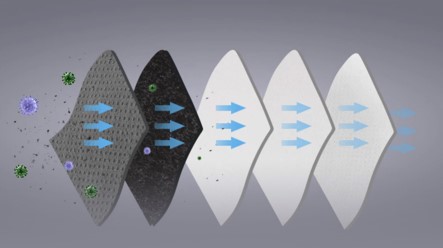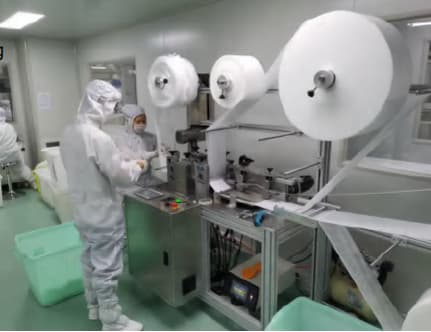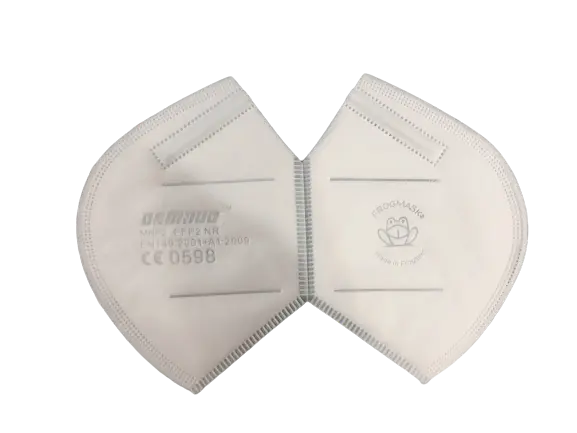
The breathing filter is the essential element of any anti-pollution mask to trap fine particles. They can be sewn in or removable. Let’s take a look at how they are made, how they filter and when they should be replaced.
How is a breathing filter made?
In general, masks are made up of multiple layers of filter material and may optionally include an exhalation valve. The illustration below shows the different layers. They perform a variety of functions, which include primarily filtration but also comfort or tear resistance.

A respiratory filter consists of several layers of non-woven fabric. There may be a layer of activated carbon and the last layer of microfibres is mainly dedicated to softness for a more pleasant contact with the skin.
A non-woven textile is a textile whose fibres are randomly arranged at the time of manufacture. These textiles are often classified according to their field of application or their technical characteristics. Its oldest form seems to be felt, but for respiratory masks, it is Polypropylene, i.e. plastic.
Polypropylene (PP) is the lightest fibre. It is 50% lighter than cotton for the same volume and much cheaper. There are three main methods of manufacturing Polypropylene, each with its own advantages depending on the use.
- Meltblown is a classic manufacturing process for micro- and nanofibres where a molten polymer is extruded at high speed through small nozzles.
- Le spunbond is a non-woven fabric made of 100% polypropylene continuous filaments, randomly arranged and thermally welded.
- Le spunlace is a non-woven fabric with an isotropic property (which gives it equal strength in all directions). Multiple rows of high-pressure water jets perforate the fabric and entangle its crossed fibres.
Activated carbon is used to trap volatile organic compounds such as odour-causing molecules. As such, it is widely used in kitchen extractor hoods. It is made from charred wood, bamboo or coconut.

How do breathing filters work?
The different layers are arranged from least to most filtering, just as a sieve first retains the pebbles before filtering the sand. The more layers there are, the more filtration there is, the less easily air will pass through them.
The filter materials are electrostatically charged. This electrostatic charge ensures that particles that can physically pass through the material are retained by adhering to the material.
The more efficient a mask is in terms of the size of particles filtered, the more difficult it is to breathe in. For this reason, some masks as N95 biker masks have exhalation valves for better breathing comfort, provided they are sensitive enough and placed as close to the mouth as possible, which is rarely the case! A valve is a piece of plastic containing a very thin silicone membrane.

A valve only allows air to pass in one direction, on exhalation, and closes on inhalation, so it does not filter the exhaled air and therefore does not protect those around the wearer if they are carrying a virus.
When to change the breathing filter in a pollution mask?
The service life of a filter depends mainly on the length of time it is used and the air quality index (AQI). See the article on fine particles monitoring for an explanation. A mask used in Beijing in the middle of winter will be full in a few hours, whereas it will take several weeks in a European city. On average, brands claim a fortnight’s use on a daily urban commute.
Unfortunately there are no filters that change colour when full. The main indicator is a higher resistance to inspiration when the filter is full. As a general rule, the filter will be changed more often because it is dirty than because it is full.
There are applications on mobile phones that allow you to monitor the optimal use of a filter according to the duration of use, the areas travelled through and the level of pollution found in these. But you still have to remember to start the application each time you use the mask… Tedious, isn’t it?
More generally, removable filters in reusable masks such as Frogmask should be replaced every 15 days to 3 weeks depending on frequency of use and pollution level.
Frogmask filters are now produced in Italy . A new promo pack with 20 Frogmask filters at 40€ has been created beg 2024 to cover an entire year’s needs
